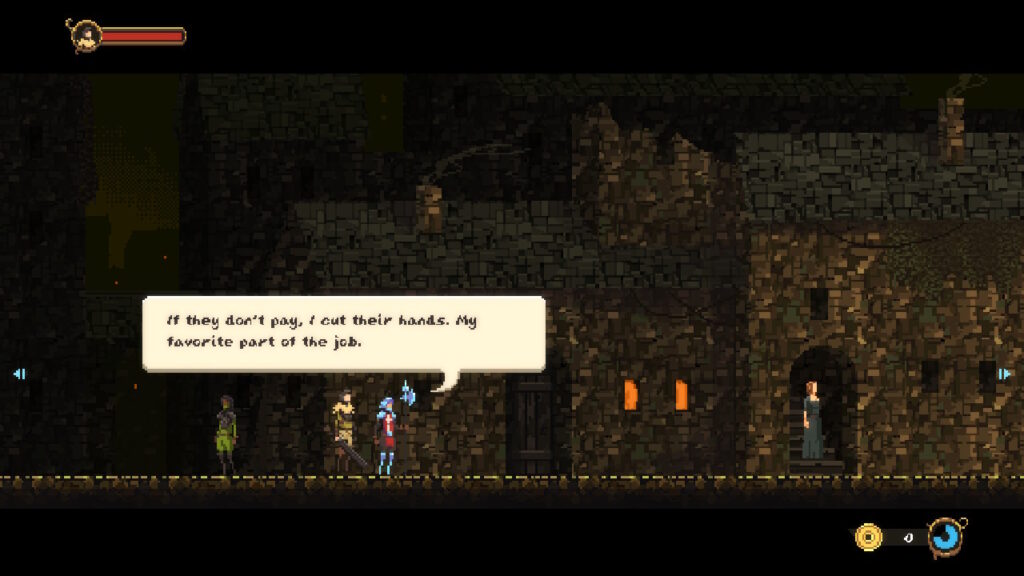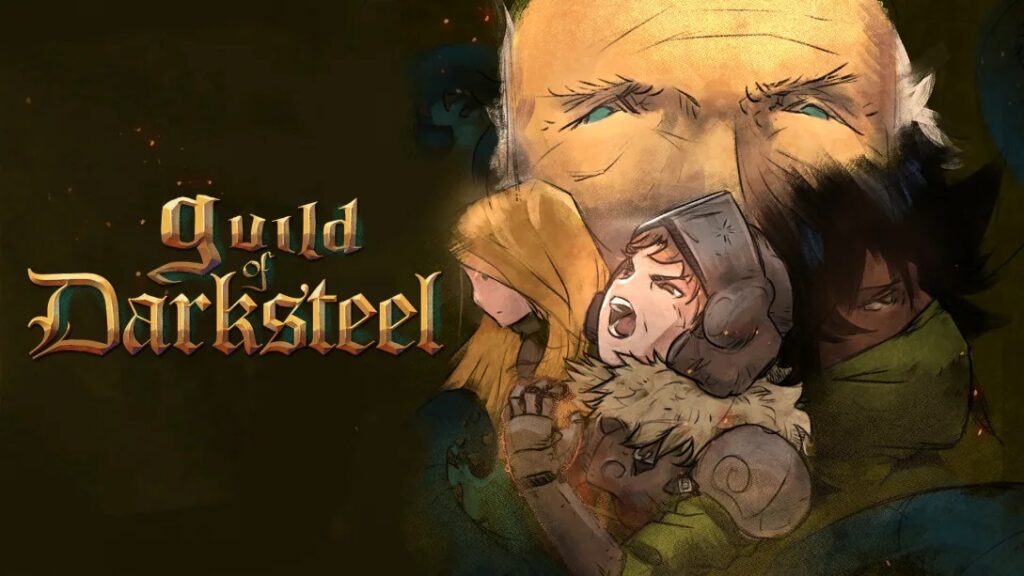
The pixel art style of modern indie games has been fashionable for a while now and the trend certainly doesn’t seem to show any hint of slowing down. A wide variety of pixellated games are available and more are coming out each day. Many of them take after vintage games of various sorts and that’s exactly the case with Guild of Darksteel from the mind of Igor Sandman and publisher Digerati. In these increasingly digital days we are seeing more and more single person projects and the bar is getting set higher and higher, and Guild of Darksteel is no exception.
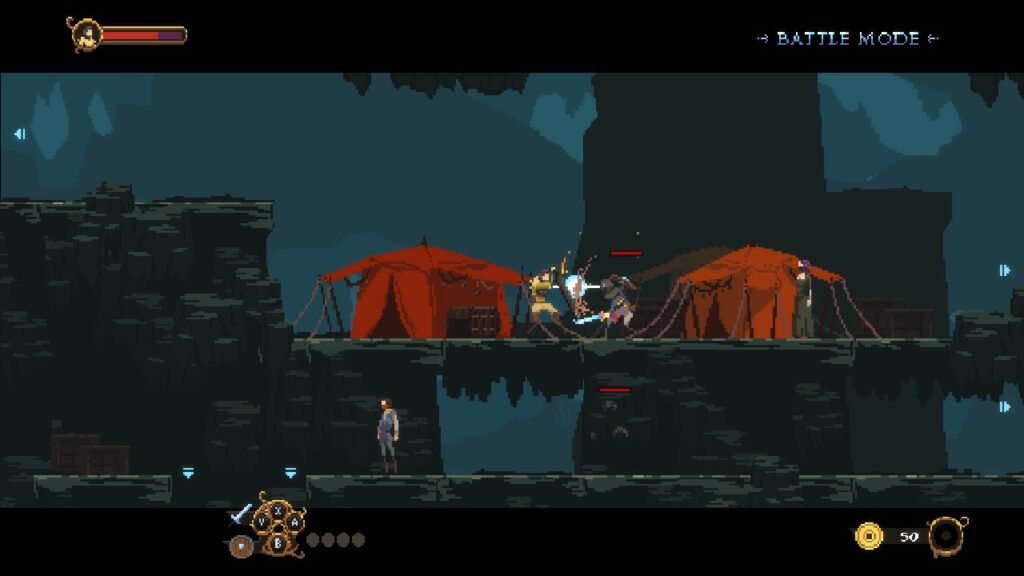
The cursed metal called Darksteel permanently bonds to its wearer, halting the aging process and bestowing immortality. While death is not the end, you can still die and painfully. You just wake up magically resurrected at the closest effigy of the gods that you have come across. This leads to some pretty extreme PTSD on the part of Darksteel wearers that distances them from humanity, making them strange and aloof. It’s a fantastic setting and well-described in bits and pieces throughout the game. The overall feel of the game borders on dystopian fantasy and it’s quite immersive, made all the more impressive by its release from a one-man studio. You are a nameless sellsword, immortal and tired of fighting in endless wars. You make your way to a town to join the Guild of Darksteel and find purpose. Normally, there’s no reason to give this much story detail in a review, but it’s important to show how interesting and compelling the plot is here, as the graphics almost don’t do it justice in some ways.
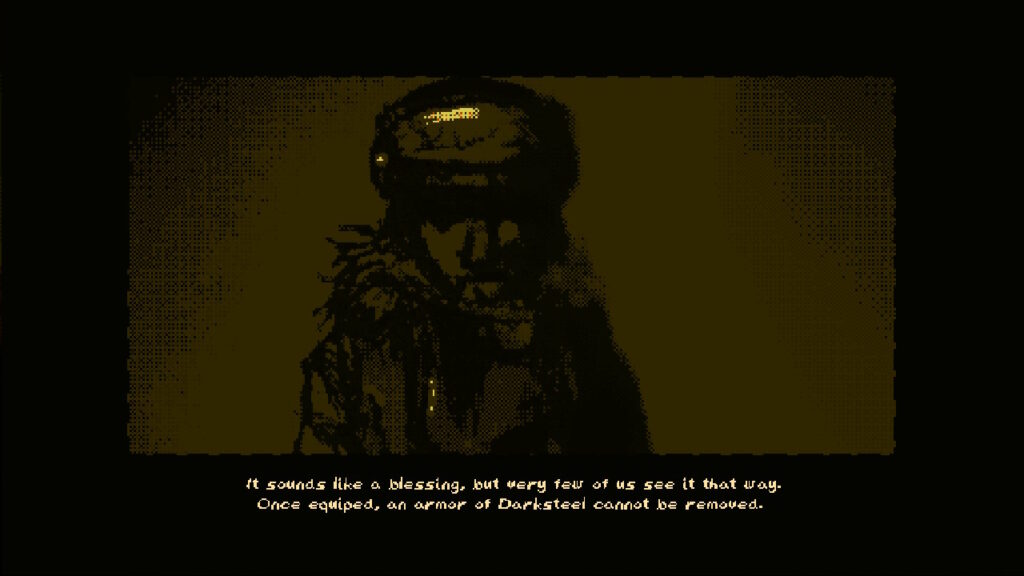
Guild of Darksteel plays a lot like the original Prince of Persia or perhaps Flashback: Quest for Identity or Blackthorne. That same methodical platform style permeates the game as you carefully move from screen to screen, fighting enemies as you go. Unlike many of those games though, Darksteel incorporates a duelling system for combat. Fighting consists of attacks and blocks, taking advantage of special moves to knock enemy health back and even color coded attacks that have more or less impact on some enemies. It’s a measured affair, forcing you to learn the patterns for each enemy and then utilize a series of response button presses. Each enemy only has one pattern, so it’s not too difficult to figure out exactly what to do in each fight, but at the same time, you still have to survive battle after battle to get to the next save point. Sections of the game can be a gruelling grind, especially if you make a single mistake and die, only to be thrown back to the last save statue and fight all the enemies over again.
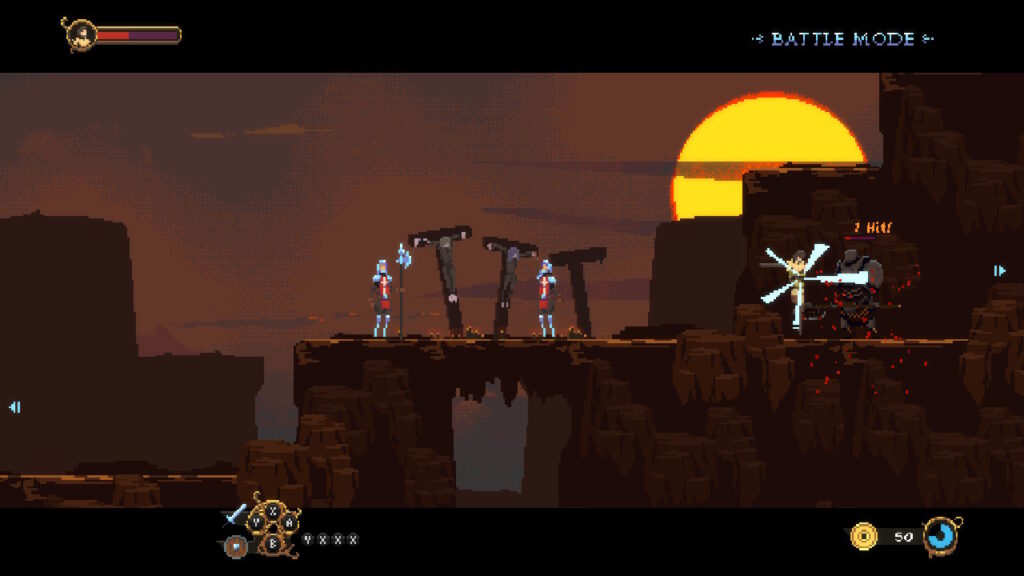
While the combat eventually becomes extremely routine in Darksteel, it isn’t inherently bad either. As you kill enemies, you gain experience, allowing you to level up your attacks until previously strong enemies fall in only a handful of carefully struck blows. It’s a smooth system that, while not exactly lenient, does allow for the average player to succeed with only moderate effort. In between exploring the caves, buildings, and other areas around the town, you’ll return to the guild for more missions, talk to the townsfolk, and generally help people out. As you do, the narrative slowly takes form piece by piece around you, incrementally drawing you into the story. The pacing of Guild of Darksteel is excellent, giving just enough dialogue, backstory and cutscenes to establish exactly what you need to know without going overboard on world-building. And while there’s nothing really complex about the level design or combat, the game is still quite fun.
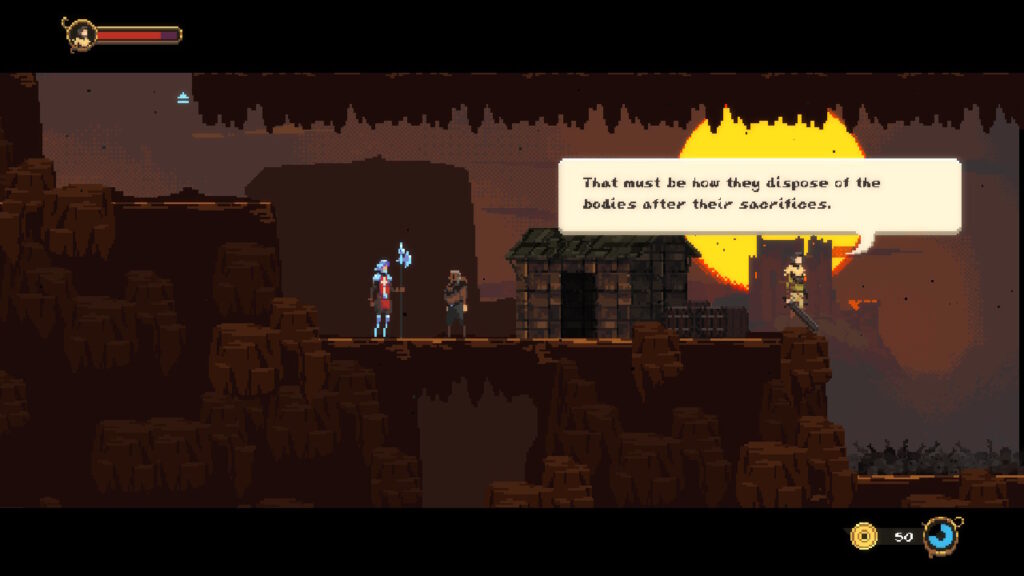
Guild of Darksteel might not appeal to everyone at first. If you’re looking for a fast-paced action game, chances are you should look elsewhere. And visually, the pixel art might seem an odd choice for this title as it could easily fit into a style like Hollow Knight or the recently released Ender Lilies (see our review here). But the minimalism of sprite-based 8-bit style graphics suit Darksteel somehow and as you play, the nuances of the characters become more noticeable. Choosing pixel graphics like this is a style choice and in this case it’s quite successful. The accompanying music is also dreary and dark, and conveys the overall feel of the world just as well as the art style, managing to quietly pull the player down and really identify with the plight of the sellsword they’re playing. The music gets a bit repetitive at times, but the tracks are quite good overall. It would be great to have a few more and some longer pieces though, as the style really hits just right. Sound effects are also solid in the game and match the flavor of gameplay and style well. All in all, the audio-visual package is quite good and Sandman has a lot to be proud of here.
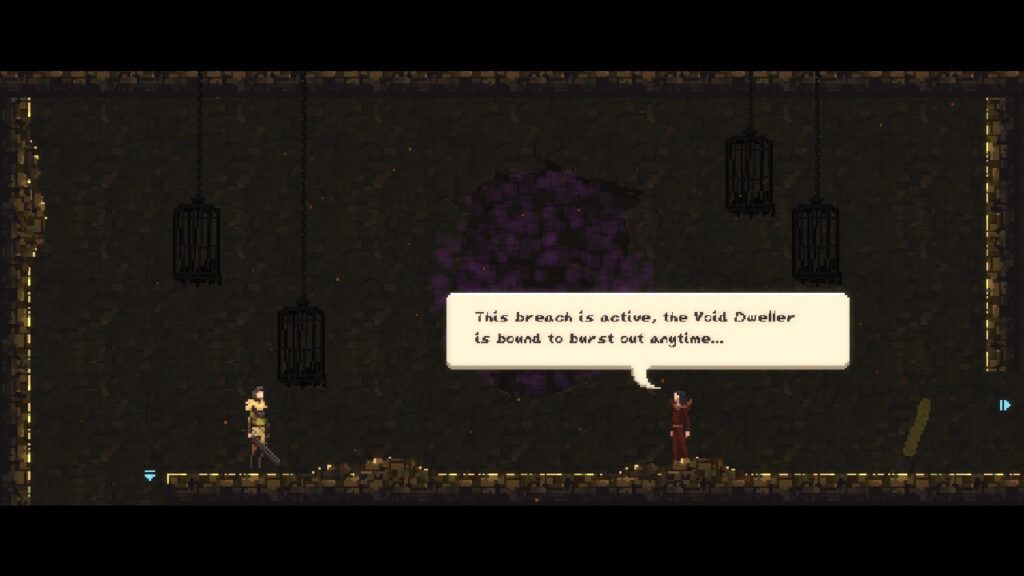
However, Guild of Darksteel isn’t perfect by any means. There are some areas of the game that could have definitely used improvement, such as the complete inability to jump gaps which you invariably miss by only a couple of pixels. Just assume you can’t jump a gap and you’ll be fine, but it damn well looks like you can and you really should be able to make some of the jumps. Additionally, there are some issues on the Switch with the special moves. Simply put, it’s quite hard to pull off the exact special move you’re looking for. Most moves require a 3-4 button combination but pulling them off consistently and doing the one you want is rare. Most of the time, no matter whether you hit the right buttons or not, either the move doesn’t go off, or you get one of a couple of default moves. This is particularly irritating when you’re trying to use a healing attack to survive longer in the game and it simply won’t trigger, no matter how fast you hit the buttons. Eventually, you might end up say, resorting to button mashing to trigger alternate combos, even on the Switch Pro Controller, and that might be more effective. Maybe. Just don’t tell anyone how you figured that out. The item menu system is a little superfluous too, considering that you rarely gather items and when you do, you automatically use them anyway, so why bother to have it?
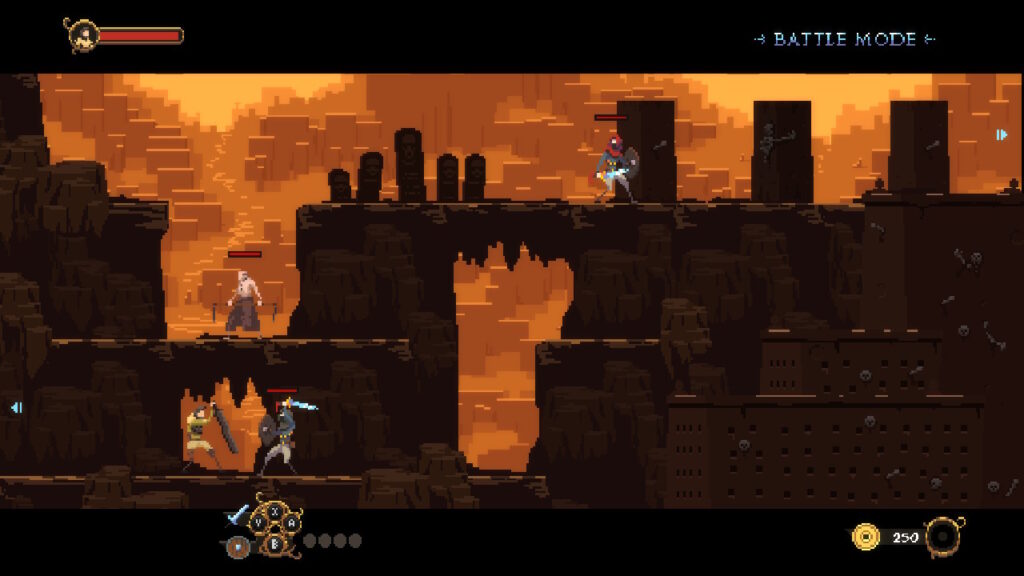
Aside from these admittedly minor overall issues, Guild of Darksteel manages to be both compelling and enjoyable. It’s not a long game either, weighing in at only around six hours or so. That might seem a bit short, but just as gameplay is starting to feel a bit stale, the game reaches its narrative climax and manages to pull you in for a bit longer. Sometimes, having a solid story to tell means telling it and being finished and that’s exactly what Guild of Darksteel manages to do. There’s not a lot of replay value here, but it doesn’t matter because the writing is gratifying and Darksteel doesn’t outstay its welcome with filler, a welcome change from much of the bloated crap coming out these days. This is a short, violent, and overall compelling game that really accomplishes exactly what it sets out to do, entertain the player. As such, the $15 price tag might seem a bit high for such a short game, but it’s still less than a theater movie and more enjoyable than most. If you love games with lots of hidden items to find and replay value, move on, but if you’re here for the sinister ambience, plot, and excellent pixellated design-work, it is absolutely worth your time to pick up Guild of Darksteel.
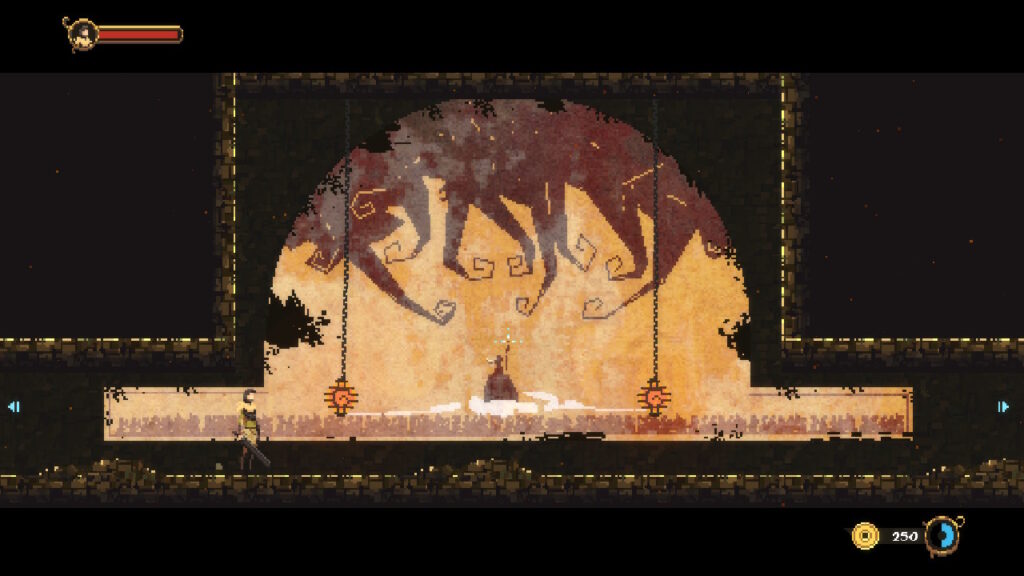
This review was based on a digital copy of Guild of Darksteel provided by the publisher. It was played on a Nintendo Switch in both docked and undocked modes and was excellent in both. Guild of Darksteel is also available for Playstation 4 and PC on Steam.
